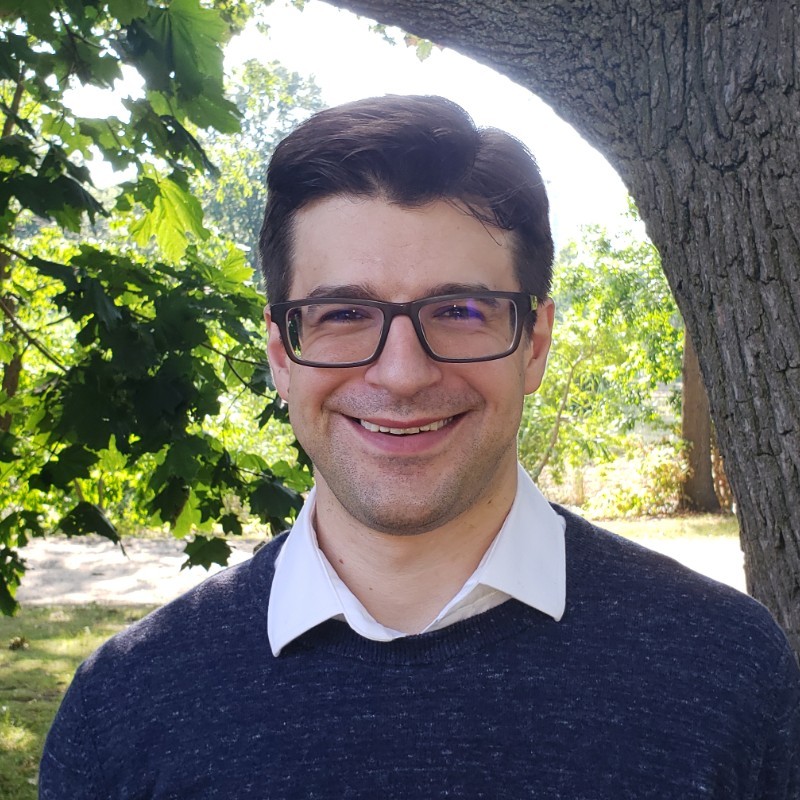Scientific Publications
I worked on several different projects in graduate school relating to string vacua. In particular, my dissertation focused on a particular family of manifolds which can be constructed from fine, regular, star triangulations of 4D reflexive polytopes. This work led a handful of peer-reviewed publications, which are listed below.
Machine Learning in the String Landscape
Journal of High Energy Physics
We utilize machine learning to study the string landscape. Deep data dives and conjecture generation are proposed as useful frameworks for utilizing machine learning in the landscape, and examples of each are presented. A decision tree accurately predicts the number of weak Fano toric threefolds arising from reflexive polytopes, each of which determines a smooth F-theory compactification, and linear regression generates a previously proven conjecture for the gauge group rank in an ensemble of $\frac{4}{3} \times 2.96 \times 10^{755}$ F-theory compactifications. Logistic regression generates a new conjecture for when $E_{6}$ arises in the large ensemble of F-theory compactifications, which is then rigorously proven. This result may be relevant for the appearance of visible sectors in the ensemble. Through conjecture generation, machine learning is useful not only for numerics, but also for rigorous results.
Vacuum Selection from Cosmology on Networks of String Geometries
Physical Review Letters
We introduce network science as a framework for studying the string landscape. Two large networks of string geometries are constructed, where nodes are extra-dimensional six-manifolds and edges represent topological transitions between them. We show that a standard bubble cosmology model on the networks has late-time behavior determined by the largest eigenvector of $−(\mathbf{L}+\mathbf{D})$, where $\mathbf{L}$ and $\mathbf{D}$ are the Laplacian and degree matrices of the networks, which provides a dynamical mechanism for vacuum selection in the string landscape.
Estimating Calabi-Yau Hypersurface and Triangulation Counts with Equation Learners
Journal of High Energy Physics
We provide the first estimate of the number of fine, regular, star triangulations of the four-dimensional reflexive polytopes, as classified by Kreuzer and Skarke (KS). This provides an upper bound on the number of Calabi-Yau threefold hypersurfaces in toric varieties. The estimate is performed with deep learning, specifically the novel equation learner (EQL) architecture. We demonstrate that EQL networks accurately predict numbers of triangulations far beyond the $h^{1,1}$ training region, allowing for reliable extrapolation. We estimate that number of triangulations in the KS dataset is $10^{10,505}$, dominated by the polytope with the highest $ h^{1,1} $ value.
Orientifold Calabi-Yau Threefolds with Divisor Involutions and String Landscape
Preprint on arXiv
We establish an orientifold Calabi-Yau threefold database for h1,1(X)≤6 by considering non-trivial $\mathbb{Z}_2$ divisor exchange involutions, using a toric Calabi-Yau database. We first determine the topology for each individual divisor (Hodge diamond), then identify and classify the proper involutions which are globally consistent across all disjoint phases of the Kähler cone for each unique geometry. Each of the proper involutions will result in an orientifold Calabi-Yau manifold. Then we clarify all possible fixed loci under the proper involution, thereby determining the locations of different types of $\mathcal{O}$-planes. It is shown that under the proper involutions, one typically ends up with a system of $\mathcal{O}3/\mathcal{O}7$-planes, and most of these will further admit naive Type IIB string vacua.The geometries with freely acting involutions are also determined. We further determine the splitting of the Hodge numbers into odd/even parity in the orbifold limit. The final result is a class of orientifold Calabi-Yau threefolds with non-trivial odd class cohomology $h^{1,1}_{−}(X/σ∗)≠0$.
Posters
During my time at the CfA, I've also had some posters at conferences. A full list is below.
